Kuelap ruins
Continuing the theme of ancient ruins in Peru, we were off to ANOTHER set of ruins – of yet ANOTHER ancient civilisation. This time it was the ruins of the ancient city of Kuelap, of the Chachapoyas ‘cloud forest’ civilisation.
Our timing was not fortunate, as the only road to get there from Chachapoyas was undergoing extensive roadworks. The road was only open before 7am, after 6pm, and between 1pm and 2pm…. yes – so a trip to Kuelap meant leaving at 6am and coming back when the road re-opened at 6pm. You might be thinking that surely a visit could be done in half a day, and so a return trip between 1pm and 2pm was possible….? WELL… yes…. BUT, guess what? There were ALSO roadworks on the access road to the Kuelap cable car!! YES, WTF – could they not do the two sets of roadworks at different times of the year!? No, because apparently it’s two different local authorities who are responsible….and of course they don’t talk to each other..
Anyway, these OTHER roadworks meant that the Kuelap cable car was running from 10am to 1.30pm instead of 8am – 4pm… clearly it would be a fairly short visit!
So for us to visit Kuelap, we would need to leave at 6am, arriving at San Pablo (the town where the cable car leaves from) at around 7.30am – and then wait for a couple of hours for the cable car to start running… then after a maxiumum of 3 hours at the site, come down on the 1.30pm cable car – and then wait AGAIN until 6pm for the road to re-open. That’s a lot of WAITING!
We researched other possible options, which turned out to be either spending the night near Kuelap, or hiking up and down instead of taking the cable car. The hike is around 3 hours each way with an ascent of over 1000m, and therefore wouldn’t really give us any extra time at the site (and also we were feeling a bit lazy 🙂 )
So, we resigned ourselves to dealing with the multiple roadworks, and we then had to decide whether to go on public transport or on a tour. We were going back and forth trying to work out the best option, when we read a review online from someone who went to get the bus at 6am, but because it wanted to wait for more passengers, it left late at 6.35am, and so arrived at the roadworks just after the road had been closed…..they had to sit in the bus until the road re-opened at 1pm?! Apparently none of the other passengers, who were all locals, seemed to be bothered…. We then also read that you often have to wait around an hour to get on the cable car if it’s busy, and it’s first come, first serve – and the tour groups all have someone to line up early and get the first tickets….
In light of this, the two sets of roadworks, and the extreme unreliabilty of Peruvian public transport – it seemed that we had better take a tour if we wanted to actually make sure we got to the ruins!
So, off we went on a tour – we left a little late as we had to wait for a few people – and also the tour guide was late?!… (everyone else on the tour was Peruvian….) – but we made it through the roadworks on time and arrived in the small town of Nuevo Tingo – where we had breakfast and a spare hour or so to wander around the town before it was time to meet up and go to the cable car.
Nuevo Tingo turned out to be quite pleasant, and even had a mirador with a view over the valley.
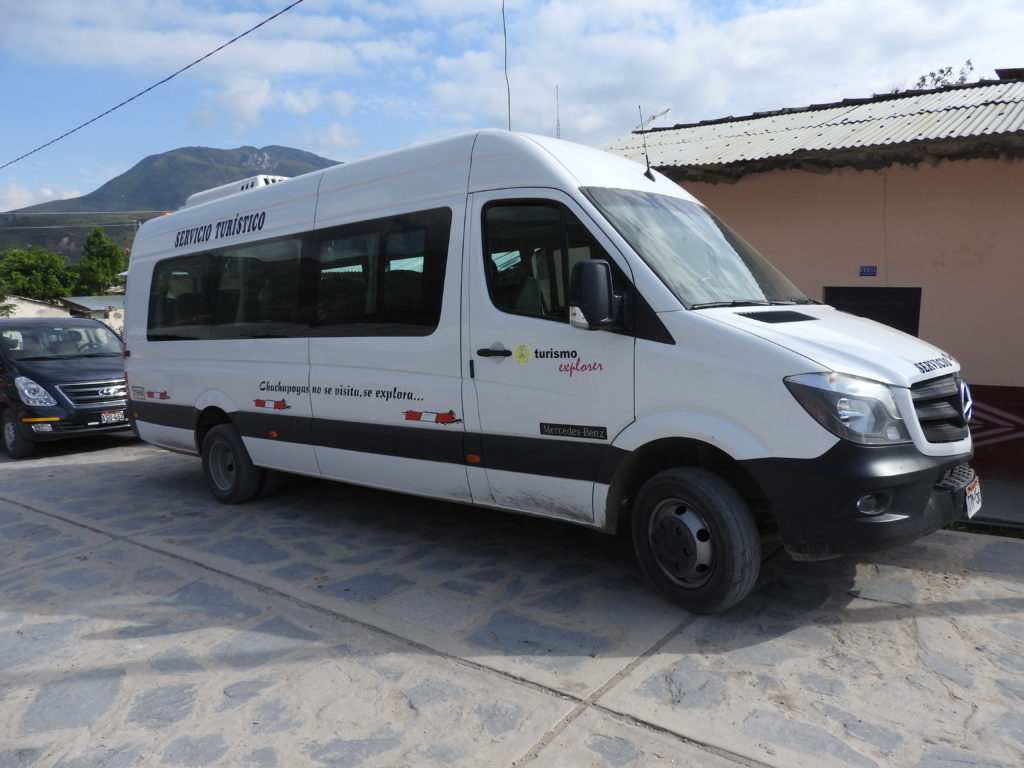
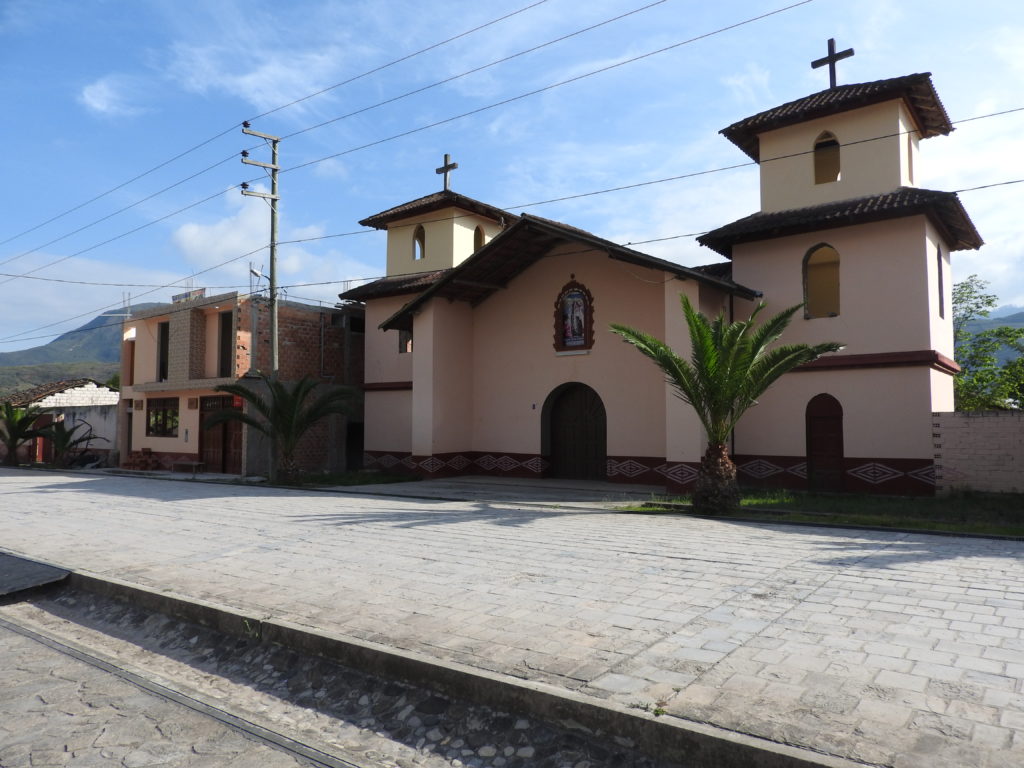
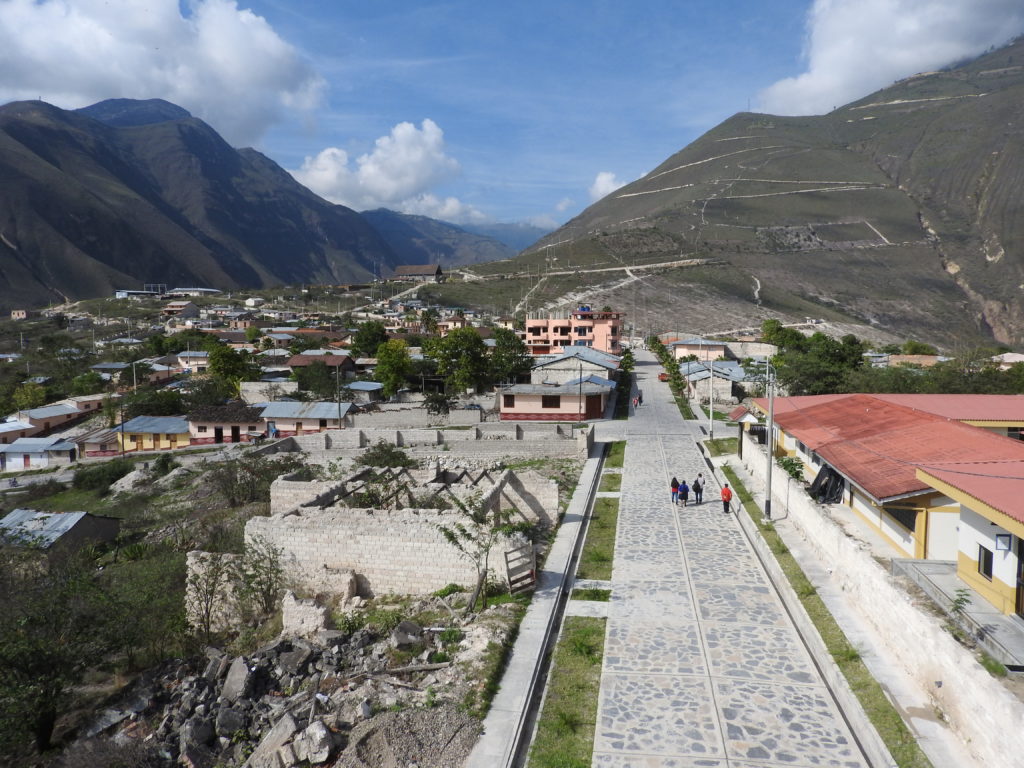
After our time in Nuevo Tingo, we headed up to the cable car station which has some good views over the town.
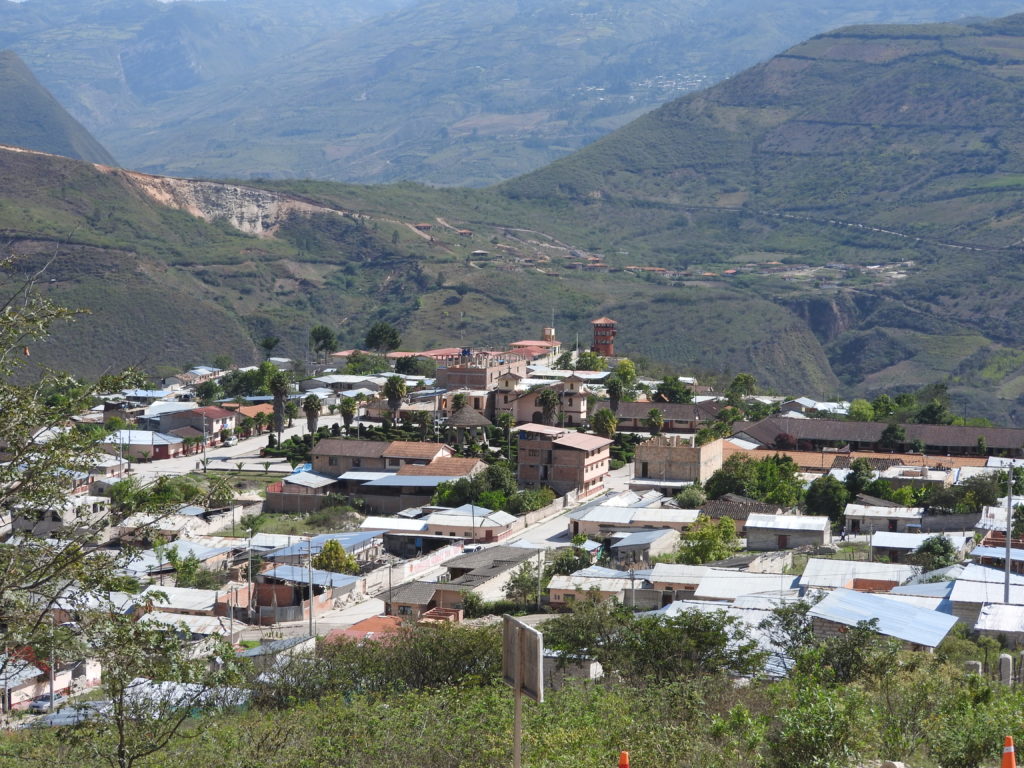
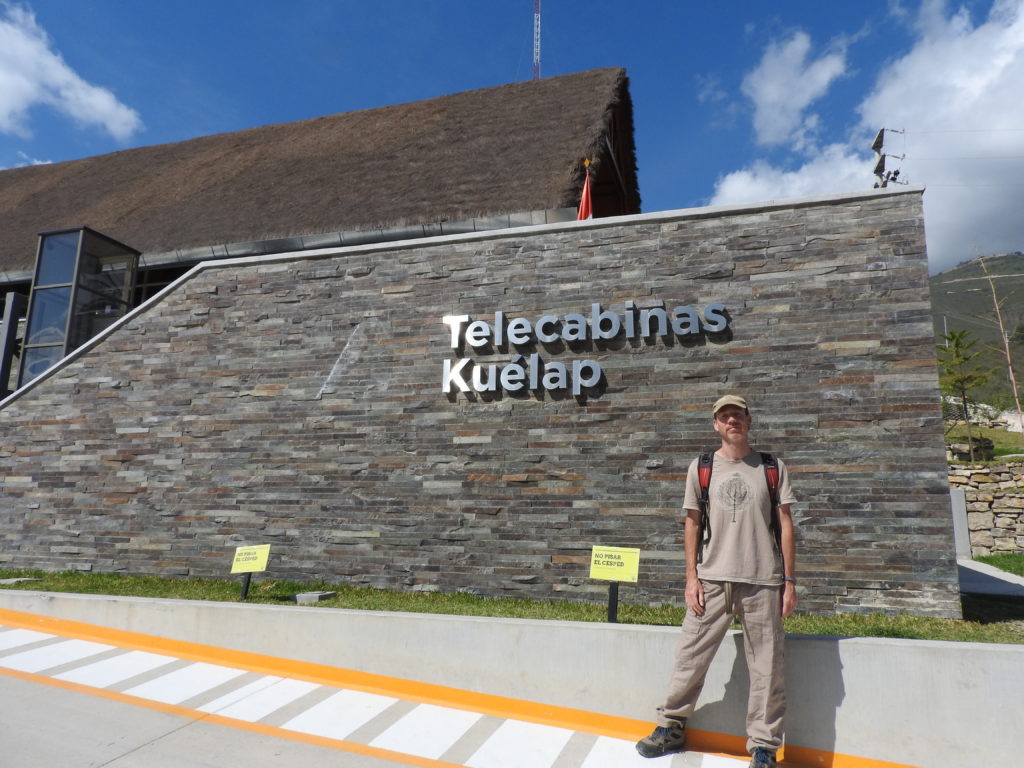
The cable car is fairly new – it opened in March 2017 – and it is the FIRST, and ONE AND ONLY cable car in the WHOLE of Peru! Yes, you would think that in a place with as many tourists and mountains as Peru, they would have built a few more cable cars…
It covers a distance of 4km, going from an elevation of 2100m to 2930m. The journey on the cable car takes around 20 minutes, but the cable car boarding point is actually 3km from the cable car ‘station’ – there is a shuttle bus (included in the ticket) from the cable car station to board the cable car. I presume that this is so that they could build the ‘station’ with ticket sellers, refreshments, toilets etc within walking distance of town, instead of 3km up a steep mountain gravel track…. kind of makes sense…. so the whole journey (shuttle + cable car) takes around 30 minutes.
Our guide had done a good job and bought the cable car tickets while we were eating breakfast – we were in the second boarding slot. As the time ticked towards our allocated boarding time, we noticed that nobody else had started to move…..?! Yes, it seemed that there was a ‘problem’ with the cable car…. a power outage apparently… GREAT!
To her credit, our guide was on the case. She was running around trying to get information, trying to negotiate extra time at the top because of the delay, and generally keeping people informed. As time ticked on, we wondered if we would actually get up there at all….
There was another tour group nearby which consisted entirely of backpackers – they were getting their tour in English (their guide was a bit annoying though….) They were actually with the same tour company as us – we had asked if there was an English tour available, and told that there wasn’t – so presumably this lot had already been booked in. ANYWAY, their guide said to them that if the cable car didn’t open soon, there was a place that they could drive to in an hour, where they could do a steep 45 minute hike to get up there without using the cable car. We asked our guide about this option, and she pointed out that our minibus was full of old, fat, and unfit people who wouldn’t be able to walk up (that’s my not quite literal translation of what she said…. 🙂 )
There was nothing left that we could do – except for moan to ourselves about not being on the ‘backpacker’ bus, and keep our fingers crossed that the cable car would re-open….
Ten minutes after the ‘backpacker bus’ people drove off to go and hike up the mountain, the cable car re-opened!!! YES! SCREW YOU BACKPACKERS! 🙂 🙂
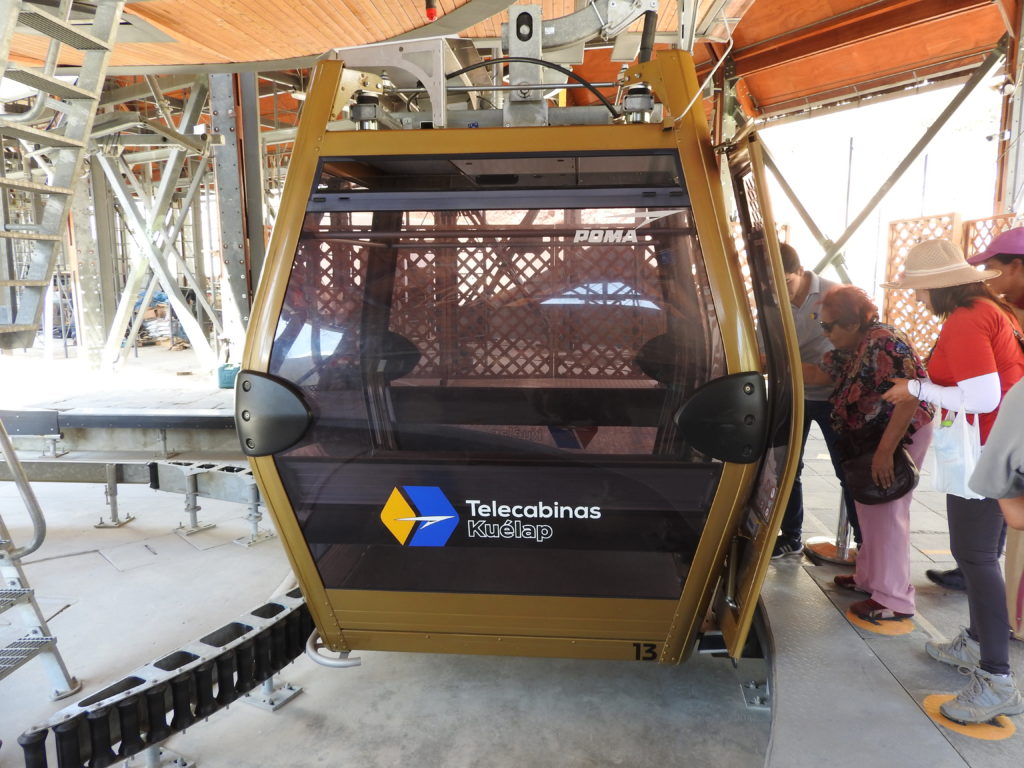
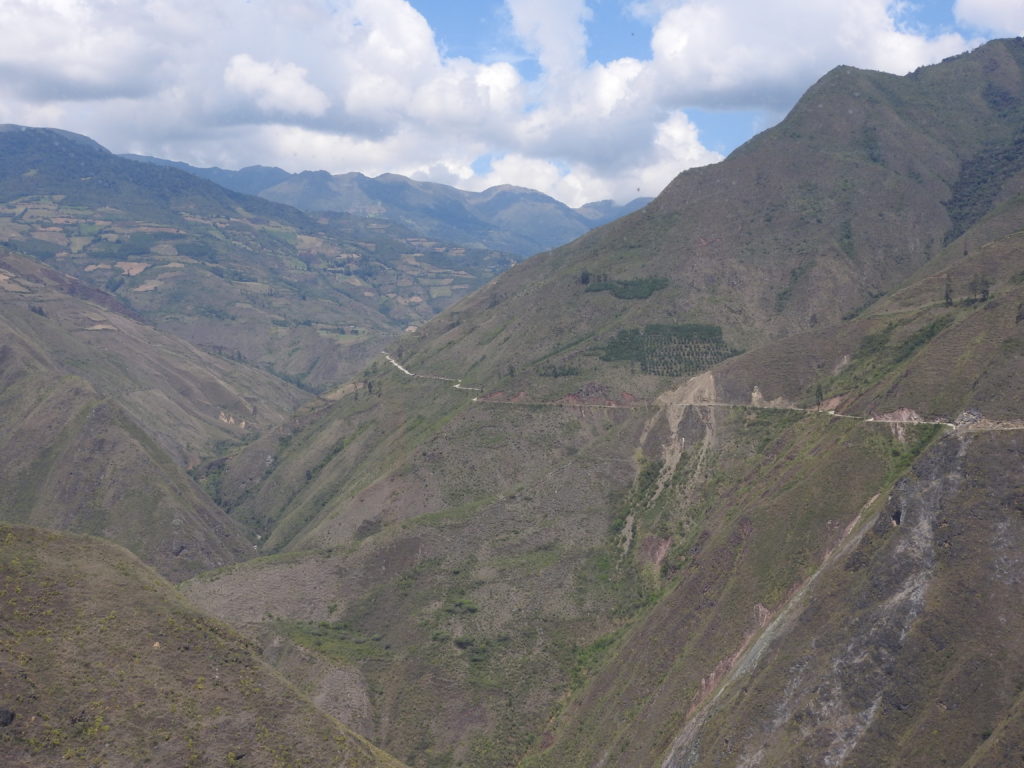
Because of the delay, we had less time at the site – but to her credit, the guide didn’t skip any part of the site, and it didn’t feel especially rushed – except right at the very end when she started getting worried about missing the last cable car down!
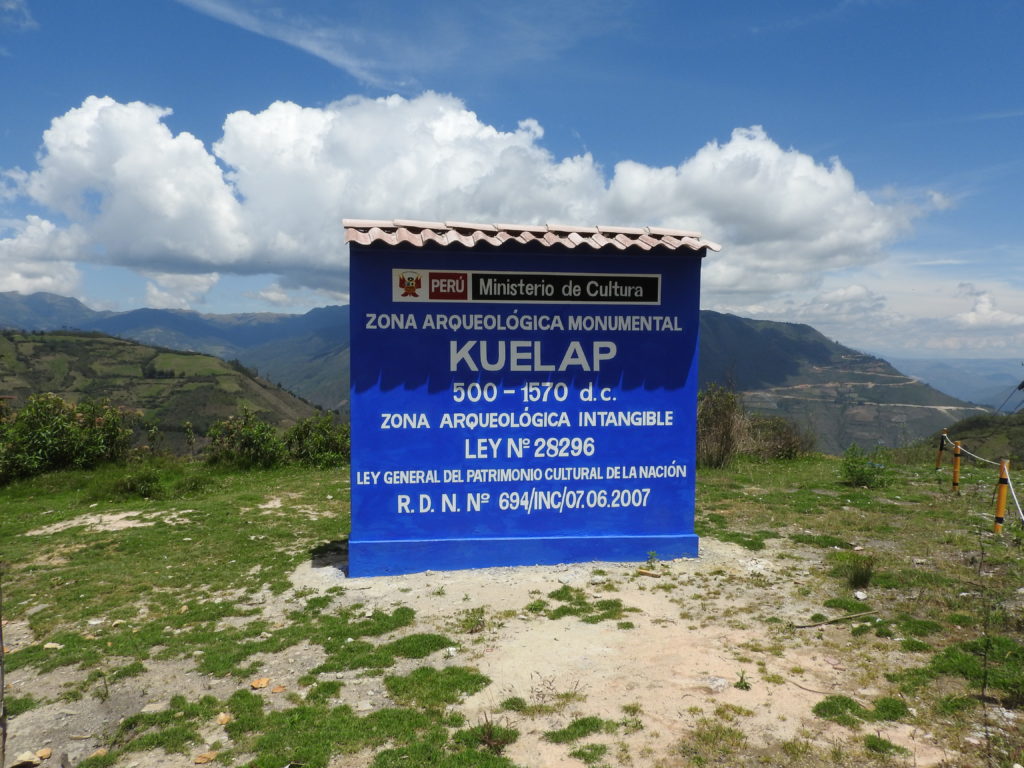
Although getting up here had been quite an ordeal already, they were STILL going to make us work a bit more…. the cable car arrives at a ‘tourist village’ type area with souvenirs and so on, and it’s STILL another 1km uphill to get to the ruins! At least there was a good view…..
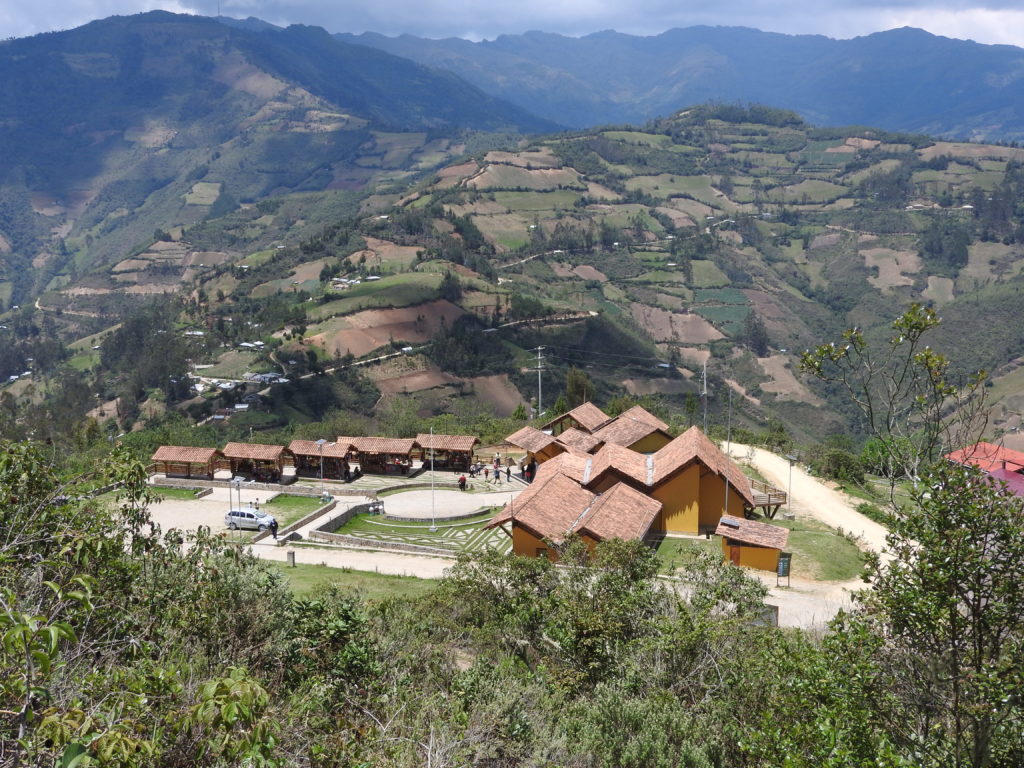

The ruins at Kuelap are mostly unrestored – they are doing restorations of some areas, but many areas are just as they were found. It was also not especially busy (not surprising I suppose, given the roadworks!), so it was a really nice experience wandering around the ruins, and the guide was also really good and enthusiastic. There is a set path through the ruins which everybody follows, and the guide stopped at every point of interest and told us a little bit about what we were looking at.
The ruins are located at around 3000m above sea level in a cloud forest area. Because of its cloud forest location, the ruins are full of trees covered with epiphytes (organisms that grow on other trees and plants).
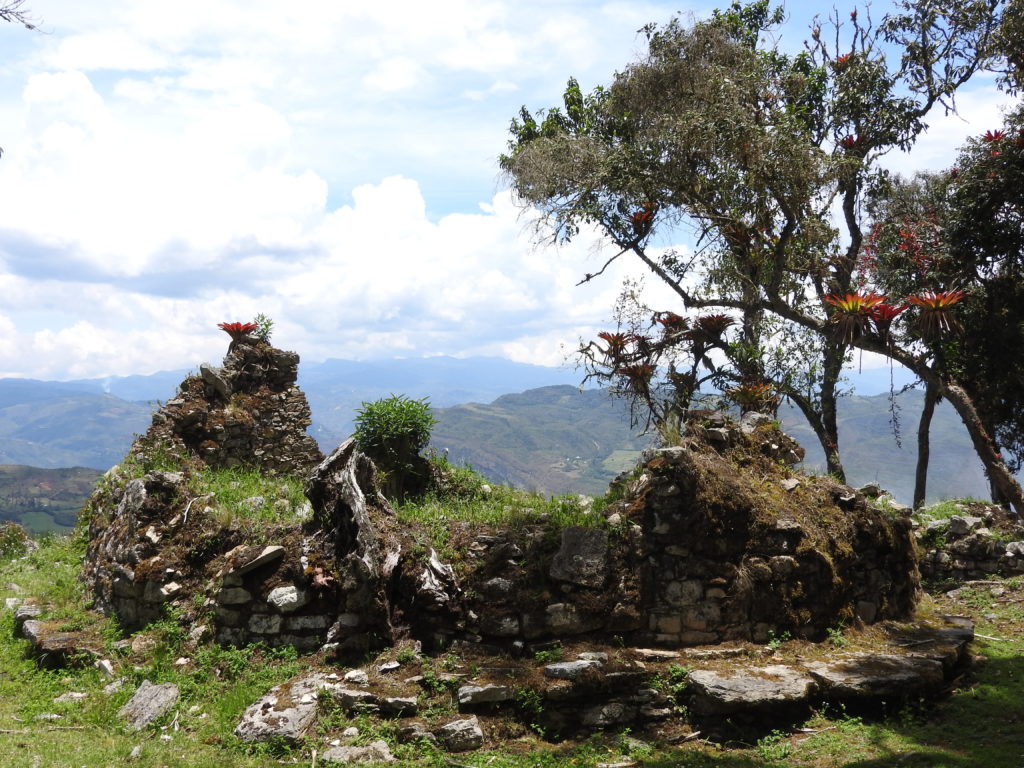
The city was built in around 1000 AD, and had an estimated population of around 300,000 people. It was abandonded in the 1500s when the Spanish invaded. It was a walled city with only three entrances, and the walls were up to 20m high and made with huge limestone blocks – exhibiting some very fine masonry.
Inside the city were around 500 structures – which were mostly circular houses with a straw roof. There was also a large building which is believed to be temple of some kind. Only the walls and foundations of the structures remain, but many of the structures have stone designs on them.
The Chachapoyas people who lived in the city, are also known as the ‘warriors of the clouds’ (because they lived in the cloud forest 🙂 ). Not much is known about them, but they were supposedly ‘fair-skinned’ and looked like gringos! So there were ‘gringos’ in Peru before the Europeans came! They were also known to believe that the living and the dead were part of the same realm and intertwined in some way… so Kuelap is home to many, many bones of dead people….
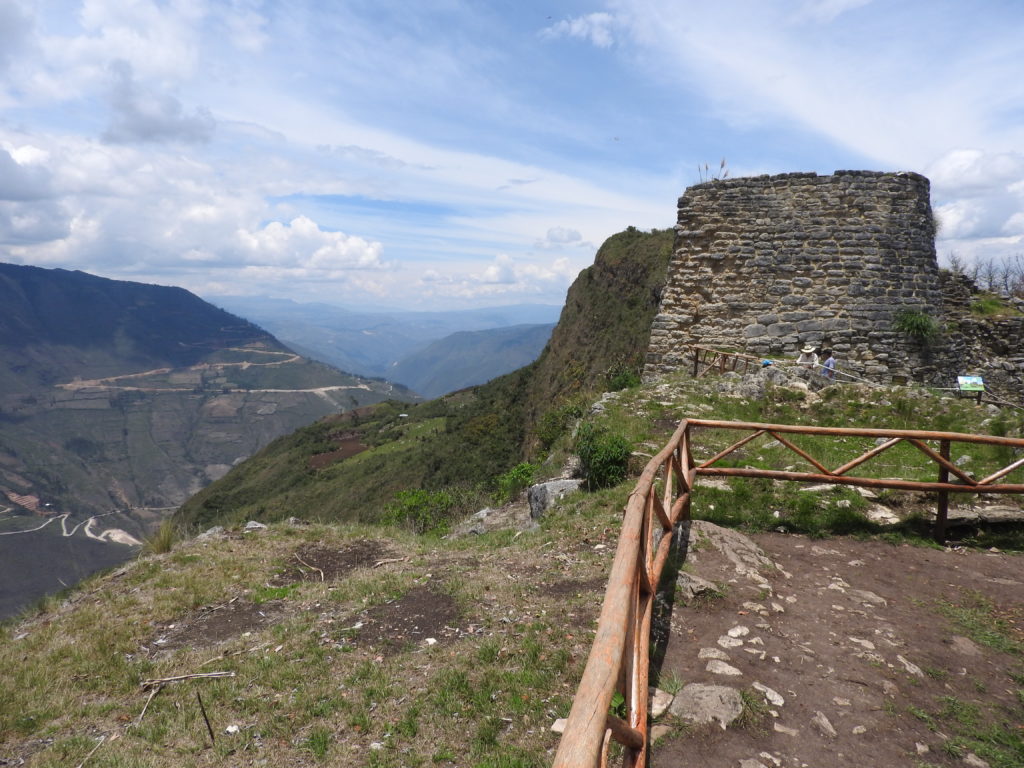
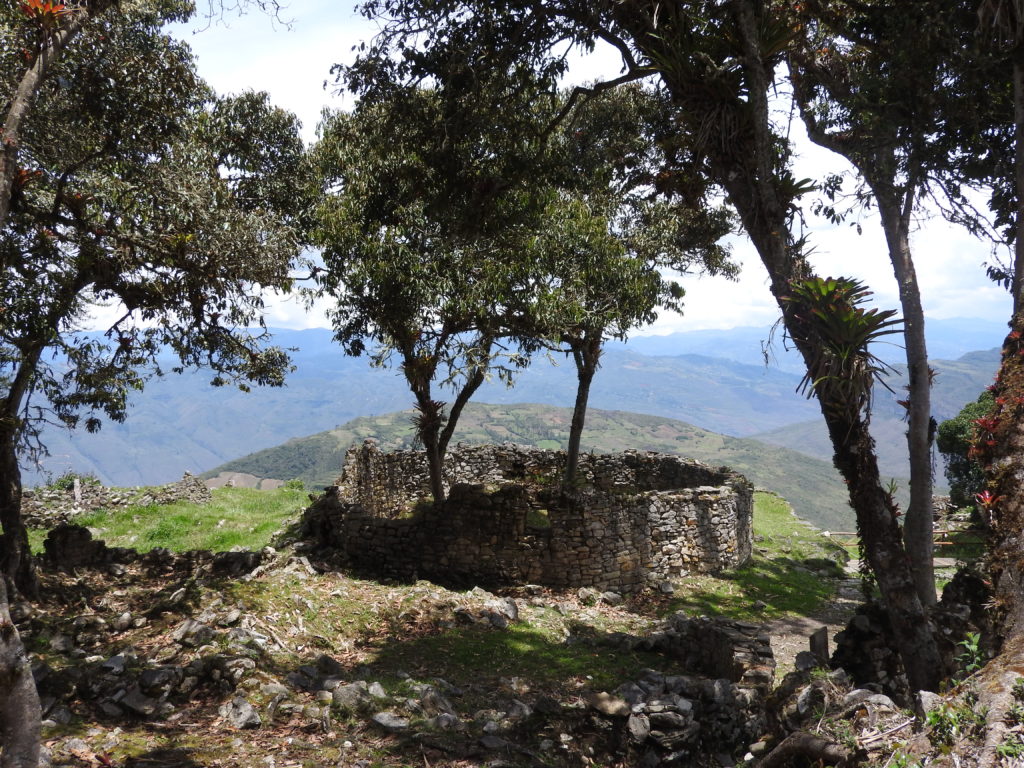
Our guide told us that the number of lines on any diamond shapes that were on the outside of a dwelling, signified the importance of the occupants of the dwelling. The more lines, the more important the occupants.
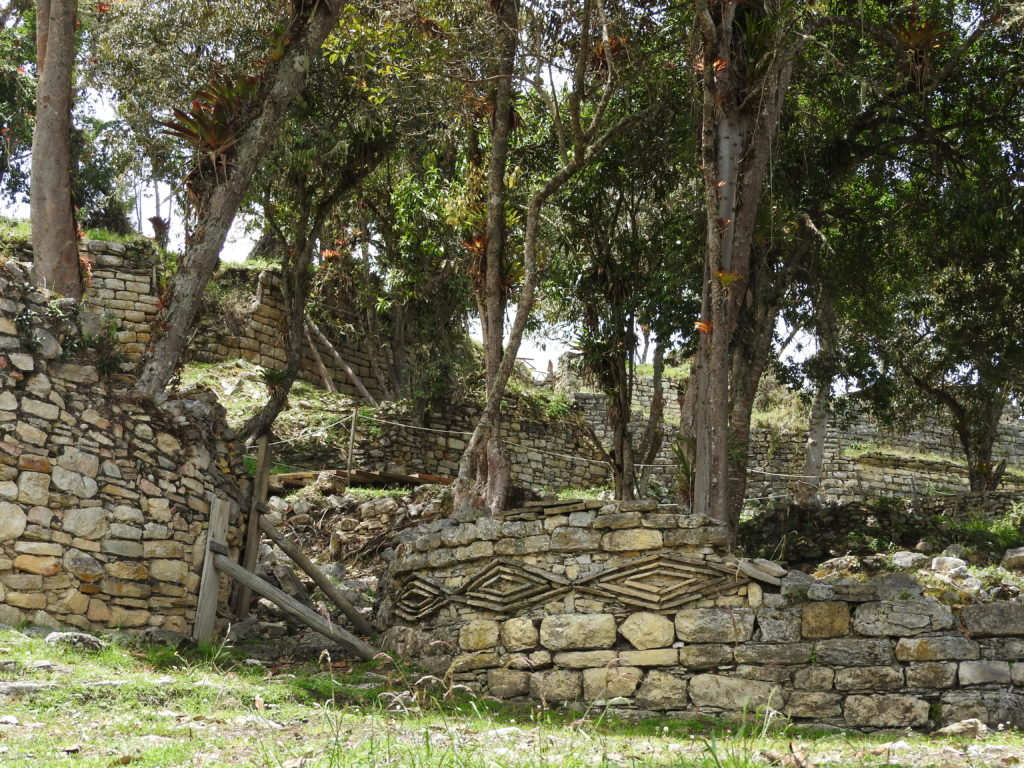
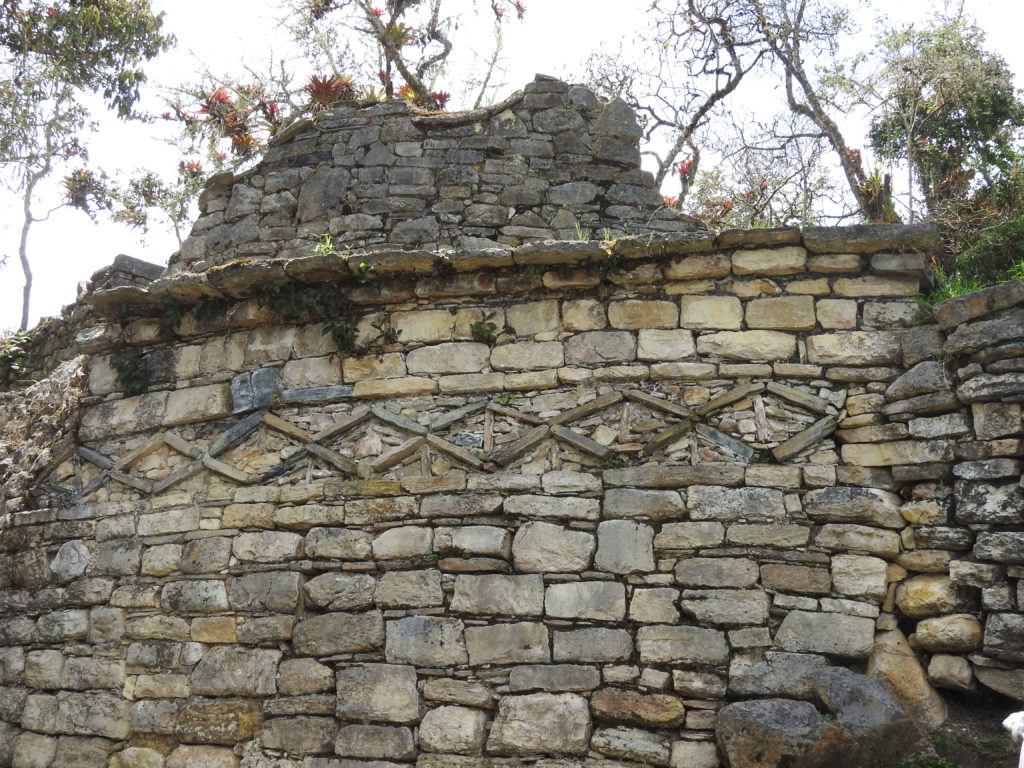
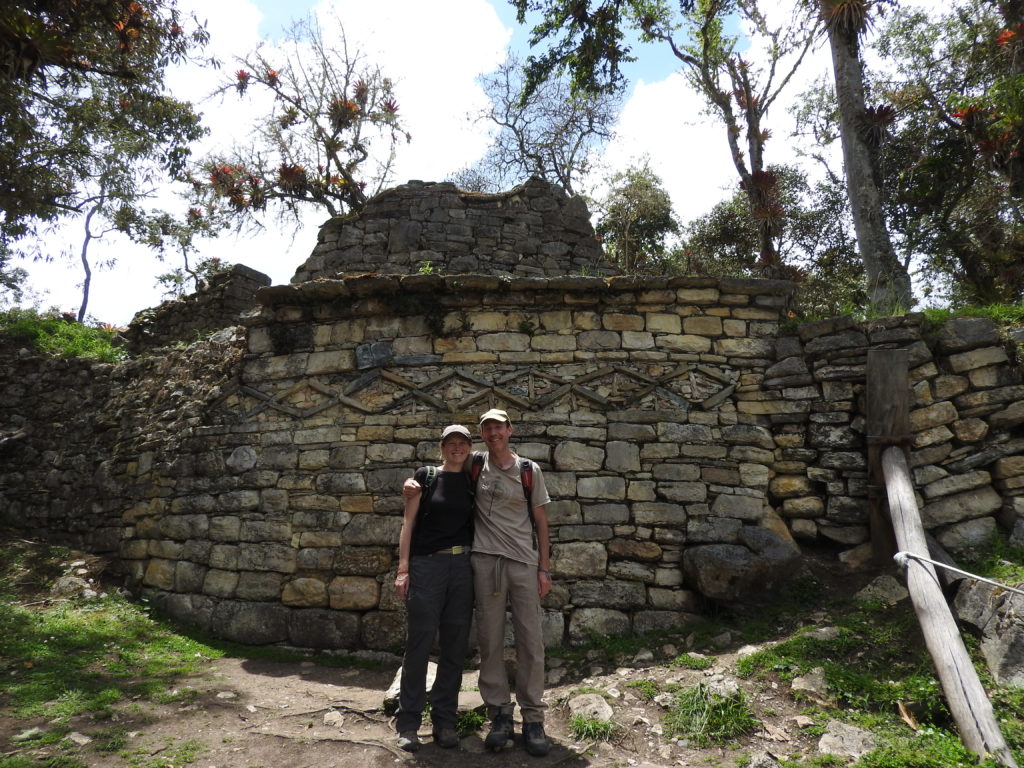


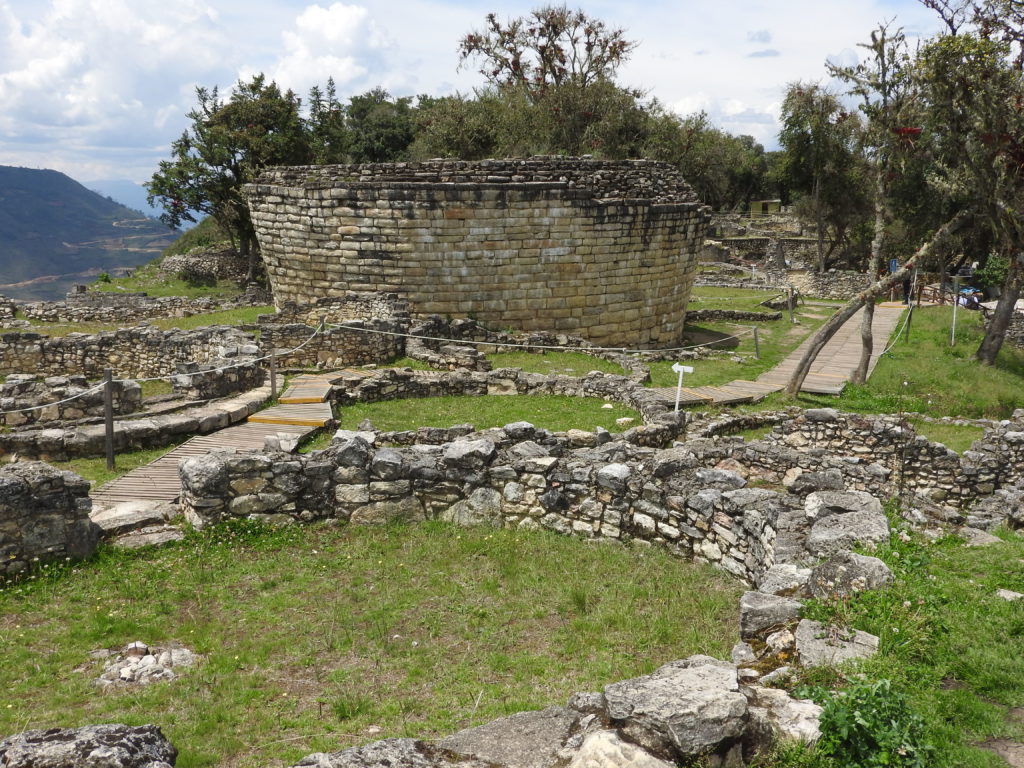
One of the interesting things about the dwellings, was the small round hole in each one of them, which came with a large rectangular slab for covering it up. Our guide asked us to guess what they were for…here is a picture of one….

Lots of people (including you?) think that it was a toilet. Some people think that it was a fireplace. BUT NO!
It was actually used for keeping the remains of the family’s dead relatives inside! Yes, so that they could be closer to their dead relatives – all part of their belief in the intertwining of life and death….

The time went very quickly, and we REALLY enjoyed our visit to Kuelap – it was a very different type of experience to the ruins of the Sacred Valley – much less crowded, and with ‘wilder’ ruins.
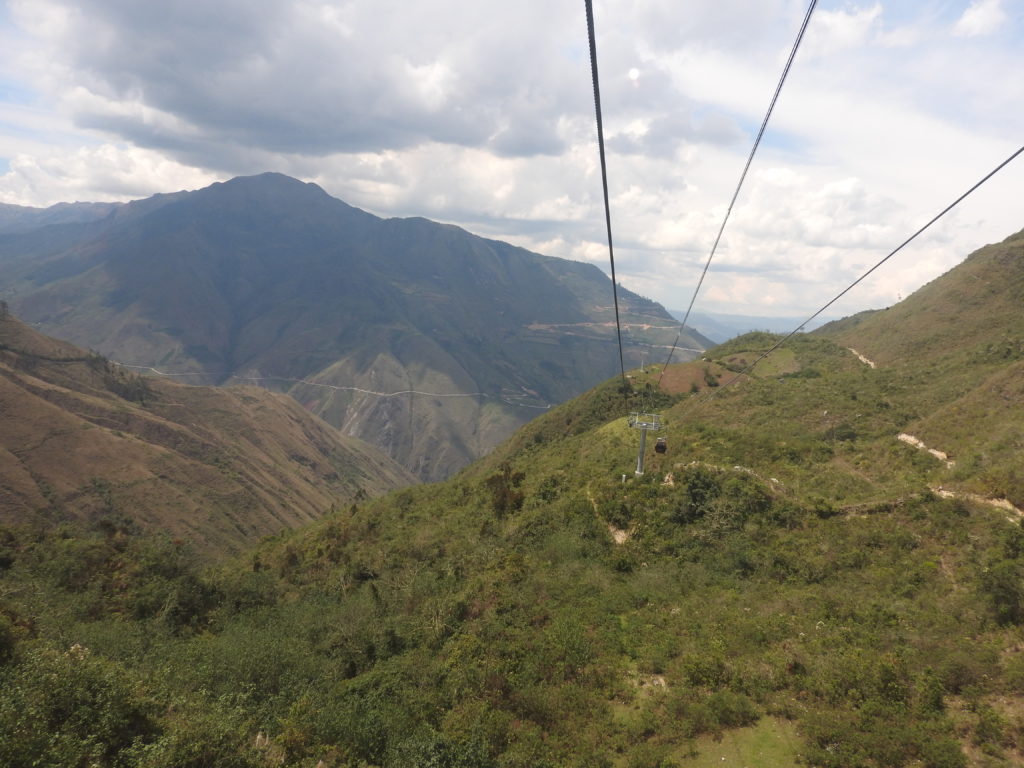
On arrival back in town, it was time for a delicious fish lunch! Unfortunately, even after this, it was only around 3.15pm – still just under three hours until the road opened again 🙁
The plan was to leave anyway, and hope that they would open the road early (apparently sometimes the workers just go home early and open the road). This sounded like a crap plan to us, as we would be stuck sitting in the van with no fresh air, and no toilet…. sigh…. Off we went – and of course the road was still closed…..
The driver (whose plan I think it actually was…) seemed to be quite happy to just sit there until the road opened – but our guide saved the day by suggesting that we drive a bit back down the road to go and hang out by the river. YAY! Much better idea 🙂
The area by the river turned out to be a lovely spot where you could go across on a kind of platform on a wire – and on the other side you could buy drinks, sit by the river, make your own sugarcane juice, and walk along the river to see another ruin! RESULT! 🙂

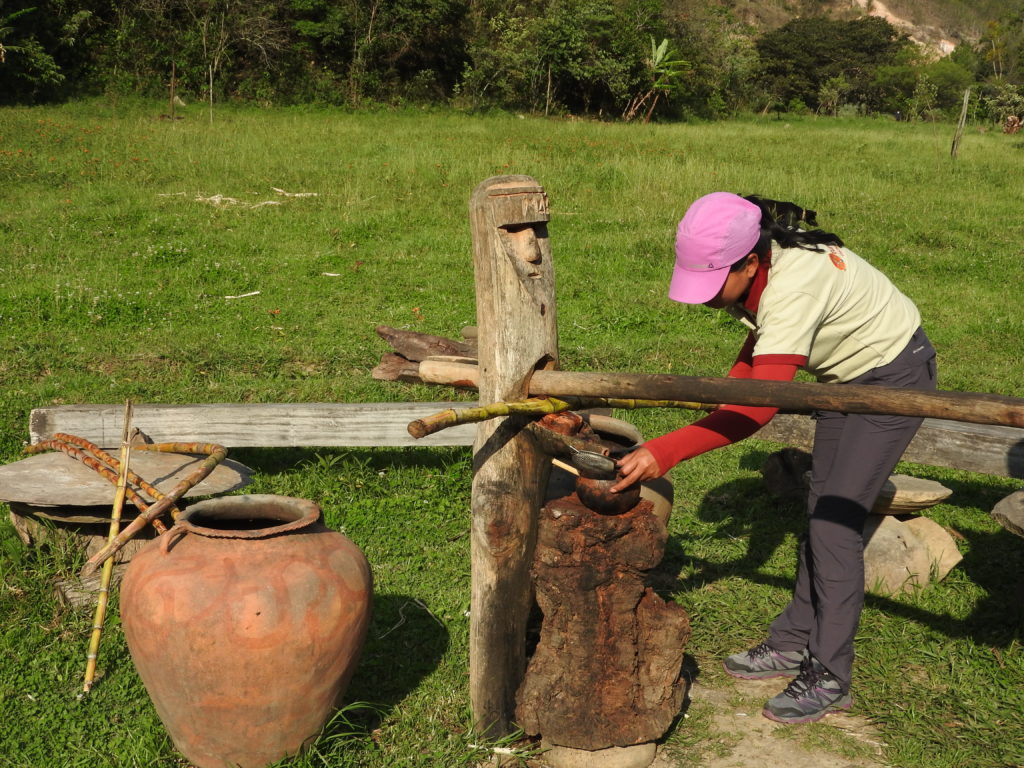

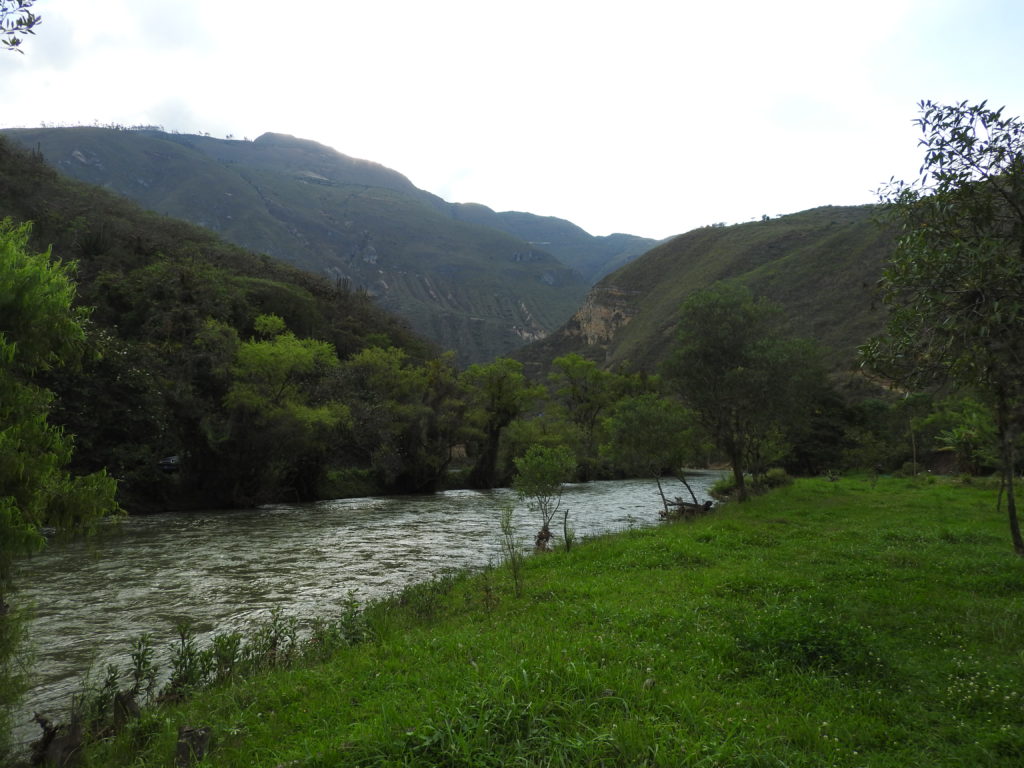
It was REALLY nice by the river, and at around 5pm we saw the ‘backpacker bus’ go past – they had only just finished their lunch – as using the ‘drive-walk’ method takes a lot longer than the cable-car…… lunch at 4pm, and then no riverside relaxation – we almost felt sorry for them…. (almost 🙂 ) as we relaxed with a cold drink by the river…. 🙂
We stayed by the river until the road opened, and then it was time to leave – the day had turned out WAY better than we imagined it would.
